Endometrial preparation for women undergoing embryo transfer with frozen embryos or embryos derived from donor oocytes
- PMID: 33112418
- PMCID: PMC8094620
- DOI: 10.1002/14651858.CD006359.pub3
Endometrial preparation for women undergoing embryo transfer with frozen embryos or embryos derived from donor oocytes
Abstract
Background: A frozen embryo transfer (FET) cycle is when one or more embryos (frozen during a previous treatment cycle) are thawed and transferred to the uterus. Some women undergo fresh embryo transfer (ET) cycles with embryos derived from donated oocytes. In both situations, the endometrium is primed with oestrogen and progestogen in different doses and routes of administration.
Objectives: To evaluate the most effective endometrial preparation for women undergoing transfer with frozen embryos or embryos from donor oocytes with regard to the subsequent live birth rate (LBR).
Search methods: The Cochrane Gynaecology and Fertility Group trials register, CENTRAL, MEDLINE, Embase, PsycINFO, LILACS, trials registers and abstracts of reproductive societies' meetings were searched in June 2020 together with reference checking and contact with study authors and experts in the field to identify additional studies.
Selection criteria: Randomised controlled trials (RCTs) evaluating endometrial preparation in women undergoing fresh donor cycles and frozen embryo transfers.
Data collection and analysis: We used standard methodological procedures recommended by Cochrane. We analysed all available interventions versus placebo, no treatment, or between each other. The primary review outcome was live birth rate. Secondary outcomes were clinical and multiple pregnancy, miscarriage, cycle cancellation, endometrial thickness and adverse effects.
Main results: Thirty-one RCTs (5426 women) were included. Evidence was moderate to very low-quality: the main limitations were serious risk of bias due to poor reporting of methods, and serious imprecision. Stimulated versus programmed cycle We are uncertain whether a letrozole-stimulated cycle compared to a programmed cycle, for endometrial preparation, improves LBR (odds ratio (OR) 1.26, 95% confidence interval (CI) 0.49 to 3.26; 100 participants; one study; very low-quality evidence). Stimulating with follicle stimulating hormone (FSH), letrozole or clomiphene citrate may improve clinical pregnancy rate (CPR) (OR 1.63, 95% CI 1.12 to 2.38; 656 participants; five studies; I2 = 11%; low-quality evidence). We are uncertain if they reduce miscarriage rate (MR) (OR 0.79, 95% CI 0.36 to 1.71; 355 participants; three studies; I2 = 0%; very low-quality evidence). Endometrial thickness (ET) may be reduced with clomiphene citrate (mean difference(MD) -1.04, 95% CI -1.59 to -0.49; 92 participants; one study; low-quality evidence). Other outcomes were not reported. Natural versus programmed cycle We are uncertain of the effect from a natural versus programmed cycle for LBR (OR 0.97, 95% CI 0.74 to 1.28; 1285 participants; four studies; I2 = 0%; very low-quality evidence) and CPR (OR 0.79, 95% CI 0.62 to 1.01; 1249 participants; five studies; I2 = 60%; very low-quality evidence), while a natural cycle probably reduces the cycle cancellation rate (CCR) (OR 0.60, 95% CI 0.44 to 0.82; 734 participants; one study; moderate-quality evidence). We are uncertain of the effect on MR and ET. No study reported other outcomes. Transdermal versus oral oestrogens From low-quality evidence we are uncertain of the effect transdermal compared to oral oestrogens has on CPR (OR 0.86, 95% CI 0.59 to 1.25; 504 participants; three studies; I2 = 58%) or MR (OR 0.55, 95% CI 0.27 to 1.09; 414 participants; two studies; I2 = 0%). Other outcomes were not reported. Day of starting administration of progestogen When doing a fresh ET using donated oocytes in a synchronised cycle starting progestogen on the day of oocyte pick-up (OPU) or the day after OPU, in comparison with recipients that start progestogen the day prior to OPU, probably increases the CPR (OR 1.87, 95% CI 1.13 to 3.08; 282 participants; one study, moderate-quality evidence). We are uncertain of the effect on multiple pregnancy rate (MPR) or MR. It probably reduces the CCR (OR 0.28, 95% CI 0.11 to 0.74; 282 participants; one study; moderate-quality evidence). No study reported other outcomes. Gonadotropin-releasing hormone (GnRH) agonist versus control A cycle with GnRH agonist compared to without may improve LBR (OR 2.62, 95% CI 1.19 to 5.78; 234 participants; one study; low-quality evidence). From low-quality evidence we are uncertain of the effect on CPR (OR 1.08, 95% CI 0.82 to 1.43; 1289 participants; eight studies; I2 = 20%), MR (OR 0.85, 95% CI 0.36 to 2.00; 828 participants; four studies; I2 = 0%), CCR (OR 0.49, 95% CI 0.21 to 1.17; 530 participants; two studies; I2 = 0%) and ET (MD -0.08, 95% CI -0.33 to 0.16; 697 participants; four studies; I2 = 4%). No study reported other outcomes. Among different GnRH agonists From very low-quality evidence we are uncertain if cycles among different GnRH agonists improves CPR or MR. No study reported other outcomes. GnRH agonists versus GnRH antagonists GnRH antagonists compared to agonists probably improves CPR (OR 0.62, 95% CI 0.42 to 0.90; 473 participants; one study; moderate-quality evidence). We are uncertain of the effect on MR and MPR. No study reported other outcomes. Aspirin versus control From very low-quality evidence we are uncertain whether a cycle with aspirin versus without improves LBR, CPR, or ET. Steroids versus control From very low-quality evidence we are uncertain whether a cycle with steroids compared to without improves LBR, CPR or MR. No study reported other outcomes.
Authors' conclusions: There is insufficient evidence on the use of any particular intervention for endometrial preparation in women undergoing fresh donor cycles and frozen embryo transfers. In frozen embryo transfers, low-quality evidence showed that clinical pregnancy rates may be improved in a stimulated cycle compared to a programmed one, and we are uncertain of the effect when comparing a programmed cycle to a natural cycle. Cycle cancellation rates are probably reduced in a natural cycle. Although administering a GnRH agonist, compared to without, may improve live birth rates, clinical pregnancy rates will probably be improved in a GnRH antagonist cycle over an agonist cycle. In fresh synchronised oocyte donor cycles, the clinical pregnancy rate is probably improved and cycle cancellation rates are probably reduced when starting progestogen the day of or day after donor oocyte retrieval. Adequately powered studies are needed to evaluate each treatment more accurately.
Copyright © 2020 The Cochrane Collaboration. Published by John Wiley & Sons, Ltd.
Conflict of interest statement
Demian Glujovsky: None
Romina Pesce: None
Carlos Sueldo: None
Andrea Quinteiro Retamar: None
Roger Hart: RH is the Medical Director of Fertility Specialists of Western Australia and has equity interests in Western IVF and has received research grant funding from Ferring Pharmaceuticals and Merck.
Agustin Ciapponi: None
Figures


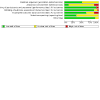



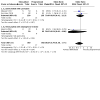
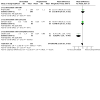


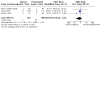

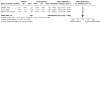
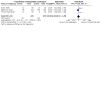





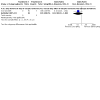




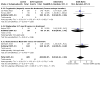






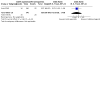







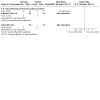
Update of
-
Endometrial preparation for women undergoing embryo transfer with frozen embryos or embryos derived from donor oocytes.Cochrane Database Syst Rev. 2010 Jan 20;(1):CD006359. doi: 10.1002/14651858.CD006359.pub2. Cochrane Database Syst Rev. 2010. Update in: Cochrane Database Syst Rev. 2020 Oct 28;10:CD006359. doi: 10.1002/14651858.CD006359.pub3. PMID: 20091592 Updated.
References
References to studies included in this review
Agha‐Hosseini 2018 {published data only}
Aleyasin 2017 {published data only}
Bider 1996 {published data only}
-
- Bider D, Amoday I, Yonesh M, Yemini Z, Mashiach S, Dor J. Glucocorticoid administration during transfer of frozen-thawed embryos: a prospective, randomized study. Fertility and Sterility 1996;66(1):154-6. - PubMed
Check 2002 {published data only}
-
- Check J, Lee G, Nazari A, Davies E, Choe J. Neither sildenafil nor vaginal estradiol improved endometrial thickness in women with thin endometria after taking oral estradiol in graduating dosage. Annual Meeting of the Pacific Coast Reproductive Society (abstract) 2002. - PubMed
Child 2013 {published data only}
-
- Child T, McVeigh E, Turner K, Mounce G. A randomized controlled trial of natural versus GnRH-agonist/HRT regimes for frozen embryo replacement. Fertility and Sterility 2013;100(3):S146. - PubMed
-
- Mounce G, McVeigh E, Turner K, Child TJ. Randomized, controlled pilot trial of natural versus hormone replacement therapy cycles in frozen embryo replacement in vitro fertilization. Fertility and sterility 2015;104(4):915-20. - PubMed
Dal Prato 2002 {published data only}
-
- Dal Prato L, Borini A, Cattoli M, Bonu MA, Sciajno R, Flamigni C. Endometrial preparation for frozen-thawed embryo transfer with or without pretreatment with gonadotropin-releasing hormone agonist. Fertility and Sterility 2002;77(5):956-60. - PubMed
Davar 2007 {published data only}
-
- Davar R, Eftekhar M, Tayebi N. Transfer of cryopreserved-thawed embryos in a cycle using exogenous steroids with or without prior gonadotrophin-realising hormone agonist. Journal of Medical Sciences 2007;7(5):880-3.
Davar 2016 {published data only}
-
- Davar R, Janati S, Mohseni F, Khabazkhoob M, Asgari S. A comparison of the effects of transdermal estradiol and estradiol valerate on endometrial receptivity in frozen-thawed embryo transfer cycles: a randomized clinical trial. Journal of Reproduction and Infertility 2016;17(2):97-103. [PMID: ] - PMC - PubMed
Davar 2020 {published data only}
Ding 2007 {published data only}
-
- Ding J, Rana N, Dmowski W. Length of progesterone treatment before transfer and implantation rates of frozen-thawed blastocysts. ASRM annual meeting 2007.
El‐Toukhy 2004 {published data only}
-
- El-Toukhy T, Taylor A, Khalaf Y, Al-Darazi K, Rowell P, Seed P, et al. Pituitary suppression in ultrasound-monitored frozen embryo replacement cycles. A randomised study. Human Reproduction (Oxford, England) 2004;19(4):874-9. - PubMed
Escriba 2006 {published data only}
-
- Escriba MJ, Bellver J, Bosch E, Sanchez M, Pellicer A, Remohi J. Delaying the initiation of progesterone supplementation until the day of fertilization does not compromise cycle outcome in patients receiving donated oocytes: a randomized study. Fertility and Sterility 2006;86(1):92-7. - PubMed
Greco 2016 {published data only}
-
- Greco E, Litwicka K, Arrivi C, Varricchio MT, Caragia A, Greco A, et al. The endometrial preparation for frozen-thawed euploid blastocyst transfer: a prospective randomized trial comparing clinical results from natural modified cycle and exogenous hormone stimulation with GnRH agonist. Journal of Assisted Reproduction and Genetics 2016;33(7):873-84. [PMID: ] - PMC - PubMed
Groenewoud 2016 {published data only}
Gutierrez 1999 {published data only}
-
- Gutierrez A, Hemandez F, Mendoza S, Monroy E, Perez-Petia E, Gallardo E. Nafarelin acetate vs leuprolide acetate in women with ovarian function undergoing oocyte donation. 55th Annual Meeting of the American Society for Reproductive Medicine 1999.
Kahraman 2018 {published data only}
-
- Kahraman S Cetinkaya CP Sahin Y Oner G. Transdermal versus oral estrogen: clinical outcomes in patients undergoing frozen-thawed single blastocyst transfer cycles without GnRHa suppression, a prospective randomized clinical trial. Journal of Assisted Reproduction and Genetics 2019;36(3):453-9. - PMC - PubMed
Lee 2008 {published data only}
-
- Lee S, Kwon H, Kim J, Lee J, Jung Y, Jung J, et al. Comparison of clinical outcome of frozen-thawed embryo transfer cycles between natural and artificial (hormone-treated) cycles. 24th Annual Meeting of the ESHRE 2008.
Madani 2019 {published data only}
-
- Madani T, Ahmadi F, Jahangiri N, Bahmanabadi A, Bagheri Lankarani N. Does low-dose aspirin improve pregnancy rate in women undergoing frozen-thawed embryo transfer cycle? A pilot double-blind, randomized placebo-controlled trial. Journal of Obstetrics and Gynaecology Research 2019;45(1):156-63. [PMID: ] - PubMed
Matsuura 2014 {published data only}
-
- Matsuura K, Ikegami M, Nagase Y, Wada T, Matsuura T. Clinical and ongoing pregnancy rates are improved by the addition of letrozole in the hormone replacement cycles undergoing the frozen-thawed single blastocyst transfer. Fertility and Sterility 2014;102(3):e229.
Moffitt 1995 {published data only}
-
- Moffitt D, Queenan JT Jr, Veeck LL, Schoolcraft W, Miller CE, Muasher SJ. Low-dose glucocorticoids after in vitro fertilization and embryo transfer have no significant effect on pregnancy rate. Fertility and Sterility 1995;63(3):571-7. - PubMed
Movahedi 2018 {published data only}
-
- Movahedi S, Aleyasin A, Agahosseini M, Safdarian L, Abroshan S, Khodaverdi S, et al. Endometrial preparation for women undergoing embryo transfer frozen-thawed embryo transfer with and without pretreatment with gonadotropin releasing hormone agonists. Journal of Family and Reproductive Health 2018;12(4):191-6. - PMC - PubMed
Nekoo 2015 {published data only}
-
- Nekoo EA, Chamani M, Tehrani ES, Rashidi BH, Tanha FD, Kalantari V. Artificial endometrial preparation for frozen-thawed embryo transfer with or without pretreatment with depot gonadotropin releasing hormone agonist in women with regular menses. Journal of Family and Reproductive Health 2015;9(1):1-4. - PMC - PubMed
Ramos 2007 {published data only}
-
- Ramos J, Caligara C, Tocino A, Rodrıguez I, Carranza F, Fernandez-Sanchez M. Prospective randomized study to compare frozen thawed embryo transfer cycles outcomes in women with functioning ovaries and HRT for endometrium preparation with or without prior GnRH suppression. ASRM Annual Meeting 2007.
Remohi 1994 {published data only}
-
- Remohi J, Gutierrez A, Vidal A, Tarin JJ, Pellicer A. The use of gonadotrophin-releasing hormone analogues in women receiving oocyte donation does not affect implantation rates. Human Reproduction (Oxford, England) 1994;9(9):1761-4. - PubMed
Samsami 2018 {published data only}
Samsami 2019 {published data only}
Sheikhi 2018 {published data only}
-
- Sheikhi O, Golsorkhtabaramiri M, Esmaeilzadeh S, Mahouti T, Heidari FN. Reproductive outcomes of vitrified blastocyst transfer in modified natural cycle versus mild hormonally stimulated and artificial protocols: a randomized control trial. JBRA Assisted Reproduction 2018;22(3):221-7. - PMC - PubMed
Tehraninejad 2018 {published data only}
Tocino 2007 {published data only}
-
- Tocino A, Caligara C, Ramos J, Carranza F, Gonzalez A, Fernandez-Sanchez M. Prospective randomized study to compare use of daily vs. depot GnRH analogue in endometrial preparation for oocyte donations cycles in recipients. ASRM Annual Meeting 2007.
Vidal 2009 {published data only}
-
- Vidal C, Giles J, Remoh J, Simn C, Garrido N, Bellver J, et al. The use of GnRH antagonist in endometrial priming improves oocyte donation outcome. Human Reproduction 2009;92(3):S255.
Wright 2006 {published data only}
-
- Wright KP, Guibert J, Weitzen S, Davy C, Fauque P, Olivennes F. Artificial versus stimulated cycles for endometrial preparation prior to frozen-thawed embryo transfer. Reproductive Biomedicine Online 2006;13(3):321-5. - PubMed
References to studies excluded from this review
Arun Muthuvel 2016 {published data only}
-
- Arun Muthuvel V, Sanjeeva Reddy N. Comparison of aqueous subcutaneous vs vaginal progesterone in frozen embryo transfer (FET) cycles. Fertility and Sterility 2016, 2016;106(3):e71.
Bernabeu 2006 {published data only}
-
- Bernabeu R, Roca M, Torres A, Ten J. Indomethacin effect on implantation rates in oocyte recipients. Human Reproduction (Oxford, England) 2006;21(2):364-9. - PubMed
Bjuresten 2011 {published data only}
-
- Bjuresten K, Landgren BM, Hovatta O, Stavreus-Evers A. Luteal phase progesterone increases live birth rate after frozen embryo transfer. Fertility and Sterility 2011;95(2):534-7. - PubMed
Boostanfar 2016 {published data only}
-
- Boostanfar R, Gates D, Guan Y, Gordon K, McCrary Sisk C, Stegmann BJ. Efficacy and safety of frozen-thawed embryo transfer in women aged 35 to 42 years from the PURSUE randomized clinical trial. Fertility and Sterility 2016;106(2):300-305.e5. [PMID: ] - PubMed
Caligara 2003 {published data only}
-
- Caligara C, Ruiz S, Terrero M, Mantrana E, Calderon G, Navarro J. Vaginal versus intramuscular progesterone in oocyte donation replacement therapy. ASRM Aannual Mmeeting 2003.
Cambiaghi 2013 {published data only}
-
- Cambiaghi AS, Leao RB, Alvarez AV, Nascimento PF. Intrauterine injection of human chorionic gonadotropin before embryo transfer may improve clinical pregnancy and implantation rates in blastocysts transfers. Fertility and Sterility 2013;100(3):S121.
Check 1998 {published data only}
-
- Check JH, Dietterich C, Lurie D, Nazari A, Chuong J. A matched study to determine whether low-dose aspirin without heparin improves pregnancy rates following frozen embryo transfer and/or affects endometrial sonographic parameters. Journal of Assisted Reproduction and Genetics 1998;15(10):579-82. - PMC - PubMed
Check 2004 {published data only}
-
- Check JH, Graziano V, Lee G, Nazari A, Choe JK, Dietterich C. Neither sildenafil nor vaginal estradiol improves endometrial thickness in women with thin endometria after taking oral estradiol in graduating dosages. Clinical & Experimental Obstetrics & Gynecology 2004;31(2):99-102. [0390-6663: (Print)] - PubMed
Davar 2015 {published data only}
Davar 2016a {published data only}
Davari‐Tanha 2016 {published data only}
Eftekhar 2013 {published data only}
Feliciani 2004 {published data only}
-
- Feliciani E, Ferraretti A, Balicchia B, Grieco N, Magli M, Gianaroli L. A prospective randomised study comparing the effect of intravaginal progesterone and intramuscular progesterone in frozen/thawed embryo transfer (FET) cycles. 20th Annual Meeting of the ESHRE 2004.
Gibbons 1998 {published data only}
Gogce 2015 {published data only}
-
- Gogce M, Benchaib M, Hadj S, Bordes A, du Menildot P, Lornage J, et al. [Administering GnRH Agonists in the luteal phase of Artificial Cycle Frozen-Thawed Embryo Transfers. A prospective randomized study [Administration d'agonistes de la GnRH (Gonadotrophin Releasing Hormone) en phase luteale des protocoles substitutifs de transferts d'embryons congeles: etude prospective randomisee]. Gynecologie, Obstetrique & Fertilite 2015;43(11):728-34. [PMID: ] - PubMed
Hershko 2016 {published data only}
-
- Hershko Klement A, Samara N, Weintraub A, Mitri F, Bentov Y, Chang P, et al. Intramuscular versus vaginal progesterone administration in medicated IVF frozen embryo transfer (FET) cycles: a randomised clinical trial. Human Reproduction 2016;31(Supplement 1):40-4. - PubMed
Huang 2017 {published data only}
-
- Huang P, Wei L, Li X. A study of intrauterine infusion of human chorionic gonadotropin (hCG) before frozen-thawed embryo transfer after two or more implantation failures. Gynecological Endocrinology : the official journal of the International Society of Gynecological Endocrinology 2017;33(1):67-9. [PMID: ] - PubMed
Krasnow 1996 {published data only}
-
- Krasnow JS, Lessey BA, Naus G, Hall LL, Guzick DS, Berga SL. Comparison of transdermal versus oral estradiol on endometrial receptivity. Fertility and Sterility 1996;65(2):332-6. - PubMed
Lan 2008 {published data only}
-
- Lan VT, Tuan P, Canh L, Tuong H, Howles CM. Comparison of the efficacy and tolerability of two formulations of vaginal progesterone for luteal phase support in frozen embryo transfer cycles. In: ASRM Annual Meeting. 2007.
-
- Lan VT, Tuan PH, Canh LT, Tuong HM, Howles CM. Progesterone supplementation during cryopreserved embryo transfer cycles: efficacy and convenience of two vaginal formulations. Reproductive Biomedicine Online 2008;17(3):318-23. [PMID: ] - PubMed
Lewin 2001 {published data only}
-
- Lewin A, Fatum M, Shufaro Y, Simon A, Reubinoff B, Laufer N, Safran A. Artificial endometrial preparation for frozen–thawed embryo transfer using oral oestradiol and a new low-dose vaginal progesterone preparation: Endometrin tablets. 17th Annual meeting of the ESHRE 2001.
Li 2014 {published data only}
-
- Li SJ, Zhang YJ, Chai XS, Nie MF, Zhou YY, Chen J L, et al. Letrozole ovulation induction: an effective option in endometrial preparation for frozen-thawed embryo transfer. Archives of Gynecology and Obstetrics 2014;289(3):687-93. - PubMed
Lightman 1999 {published data only}
-
- Lightman A, Kol S, Itskovitz-Eldor J. A prospective randomized study comparing intramuscular with intravaginal natural progesterone in programmed thaw cycles. Human Reproduction (Oxford, England) 1999;14(10):2596-9. - PubMed
Llacer 2017 {published data only}
-
- Llacer J, Garcia-Hernandez EM, Moliner B, Luque L, Ten J, Bernabeu R. Subcutaneous progesterone for endometrial preparation in substituted cycles for oocyte donation recipients: a randomized controlled trial. Oxford University Press 2017;32:i58.
Moon 2004 {published data only}
-
- Moon HS, Park SH, Lee JO, Kim KS, Joo BS. Treatment with piroxicam before embryo transfer increases the pregnancy rate after in vitro fertilization and embryo transfer. Fertility and Sterility 2004;82(4):816-20. - PubMed
Nardo 2006 {published data only}
-
- Nardo LG, Sallam HN. Progesterone supplementation to prevent recurrent miscarriage and to reduce implantation failure in assisted reproduction cycles. Reproductive Biomedicine Online 2006;13(1):47-57. - PubMed
Neuspiller 1998 {published data only}
-
- Neuspiller F, Levy M, Remohi J, Ruiz A, Simon C, Pellicer A. The use of long- and short-acting forms of gonadotrophin-releasing hormone analogues in women undergoing oocyte donation. Human Reproduction (Oxford, England) 1998;13(5):1148-51. - PubMed
Prapas 2009a {published data only}
-
- Prapas N, Tavaniotou A, Panagiotidis Y, Prapa S, Kasapi E, Goudakou M, et al. Low-dose human chorionic gonadotropin during the proliferative phase may adversely affect endometrial receptivity in oocyte recipients. Gynecological Endocrinology 2009;25(1):53-9. - PubMed
Prapas 2009b {published data only}
-
- Prapas N, Tavaniotou A, Panagiotidis Y, Prapa S, Kasapi E, Goudakou M, et al. GnRH antagonists and endometrial receptivity in oocyte recipients: a prospective randomized trial. Reproductive Biomedicine Online 2009;18(2):276-81. [1472-6491: (Electronic)] - PubMed
Sanchez 2009 {published data only}
-
- Sanchez Ribas I, Castilln G, Garrigos V, Riqueros M, Florensa M, Ballesteros A. Which is the best moment to start hormonal replacemente therapy in recipient in a synchronised oocyte donation programme? Fertility and Sterility 2009;92(3):S135-6.
Sathanandan 1991 {published data only}
-
- Sathanandan M, Macnamee MC, Rainsbury P, Wick K, Brinsden P, Edwards RG. Replacement of frozen-thawed embryos in artificial and natural cycles: a prospective semi-randomized study. Human Reproduction (Oxford, England) 1991;6(5):685-7. - PubMed
Shiotani 2006 {published data only}
-
- Shiotani M, Goto S, Kokeguchi S, Matsunaga M, Watanabe J, Hashimoto H, et al. Is hCG supplementation beneficial for cryopreserved-thawed embryo transfer in estrogen/progesterone replacement cycles? Human Reproduction 2006;21(Suppl):i82.
Simon 1998 {published data only}
-
- Simon A, Hurwitz A, Zentner BS, Bdolah Y, Laufer N. Transfer of frozen-thawed embryos in artificially prepared cycles with and without prior gonadotrophin-releasing hormone agonist suppression: a prospective randomized study. Human Reproduction (Oxford, England) 1998;13(1O):2712-7. - PubMed
Stadtmauer 2009 {published data only}
-
- Stadtmauer L, Harrison D D, Boyd J, Bocca S, Oehninger S. Pilot study evaluating a progesterone vaginal ring for luteal-phase replacement in donor oocyte recipients. Fertility & Sterility 2009;92(5):1600-5. - PubMed
Taskin 2002 {published data only}
-
- Taskin O, Akkoyunlu G, Simsek M, Demir R, Onoglu A, Sadik S. Comparing the effects of GnRH-a on endometrial receptivity in patients undergoing ART and prepared frozen embryo transfer cycles. ASRM Annual Meeting 2002.
Tesarik 2003 {published data only}
-
- Tesarik J, Hazout A, Mendoza C. Luteinizing hormone affects uterine receptivity independently of ovarian function.. Reproductive Biomedicine Online 2003;7(1):59-64. - PubMed
Weckstein 1997 {published data only}
-
- Weckstein LN, Jacobson A, Galen D, Hampton K, Hammel J. Low-dose aspirin for oocyte donation recipients with a thin endometrium: prospective, randomized study. Fertility and Sterility 1997;68(5):927-30. - PubMed
Xu 2015 {published data only}
-
- Xu B, Zhang Q, Hao J, Xu D, Li Y. Two protocols to treat thin endometrium with granulocyte colony-stimulating factor during frozen embryo transfer cycles. Reproductive Biomedicine Online 2015;30(4):349-58. [PMID: ] - PubMed
Zegers‐Hochschild 2000 {published data only}
-
- Zegers-Hochschild F, Balmaceda JP, Fabres C, Alam V, Mackenna A, Fernandez E, et al. Prospective randomized trial to evaluate the efficacy of a vaginal ring releasing progesterone for IVF and oocyte donation. Human Reproduction (Oxford, England) 2000;15(10):2093-7. - PubMed
Zolghadri 2014 {published data only}
References to studies awaiting assessment
Masrour 2018 {published data only}
-
- Masrour MJ, Ashtary F. The study of natural versus hormone replacement therapy cycles in frozen embryo transfer in infertile couples on pregnancy outcome: a double blind randomized control trial. Acta Medica Mediterranea, 2018 2018;34(6):1765.
Page 2005 {published data only}
-
- Page K, Guibert J, Weitzen S, Davy C, Fauque P, Olivennes F. A prospective randomized trial evaluating endometrial preparation for implantation of frozen/thawed embryos using an artificial cycle versus a stimulated cycle. ASRM Annual Meeting 2005.
Tur‐Kaspa 2010 {published data only}
-
- Tur-Kaspa I, Najeemuddin R, Cohen A, Tkachenko N, Fowler M. GnRH antagonist (Cetrotide) instead of agonist to prepare recipients for embryo transfer: a prospective, randomized, controlled trial. Fertility and Sterility 2010;94(4):S2 Abstract no. O-06.
Additional references
Abdolmohammadi‐Vahid 2016
-
- Abdolmohammadi-Vahid Samaneh, Danaii Shahla, Hamdi Kobra, Jadidi-Niaragh Farhad, Ahmadi Majid, Yousefi Mehdi. Novel immunotherapeutic approaches for treatment of infertility. Biomedicine & Pharmacotherapy 2016;84:1449-1459. - PubMed
De Geyter 2018
-
- De Geyter C, Calhaz-Jorge C, Kupka MS, Wyns C, Mocanu E, Motrenko T, et al. ART in Europe, 2014: results generated from European registries by ESHRE: The European IVF-monitoring Consortium (EIM) for the European Society of Human Reproduction and Embryology (ESHRE). Human Reproduction (Oxford, England) 2018;33(9):1586–601. - PubMed
DerSimonian 1986
-
- DerSimonian R, Laird M. Meta-analysis in clinical trials. Controlled Clinical Trials 1986;7:177-88. - PubMed
Devroey 1998
-
- Devroey P, Pados G. Preparation of endometrium for egg donation. Human Reproduction Update 1998;4(6):856-61. - PubMed
Fox 2016
Garcia‐Velasco 2000
-
- Garcia-Velasco JA, Martinez-Salazar FJ, Grimalt L. Implantation failure [Falla de implantacion]. Reproducción asistida del siglo XXI, Cuaderno de Medicina Reproductiva 2000;6(2):211-30.
GRADEpro GDT 2015 [Computer program]
-
- Hamilton (ON): GRADE Working Group, McMaster University, GRADEpro GDT. GRADE Working Group. Hamilton (ON): GRADE Working Group, McMaster University,, 2015.
Higgins 2011
-
- Higgins JP, Green S, (editors). Cochrane Handbook for Systematic Reviews of Interventions Version 5.1.0 [updated March 2011]. The Cochrane Collaboration. Available from handbook.cochrane.org 2011.
Kuo 1997
-
- Kuo HC, Hsu CC, Wang ST, Huang KE. Aspirin improves uterine blood flow in the peri-implantation period.. J Formos Med Assoc. 1997;96(4):253-7. - PubMed
LA Register 2015
-
- Red Latinoamericana de Reproducción Asistida. Latin American Register of Assisted Reproduction [Registro Latinoamericano de Reproduccion Asistida]. http://www.redlara.com/PDF_RED/Paper-RLA-2015.pdf (accessed 17 July 2019).
Leeton 1986
-
- Leeton J, Chan LK, Trounson A, Harman J. Pregnancy established in an infertile patient after transfer of an embryo fertilized in vitro where the oocyte was donated by the sister of the recipient. Journal of In Vitro Fertilization and Embryo Transfer: IVF 1986;3(6):379-82. [0740-7769 (Print)] - PubMed
Malinova 2013
-
- Malinova M, Abouyta T, Krasteva M. The effect of vaginal sildenafil citrate on uterine blood flow and endometrium in the infertile women. Akusherstvo i ginekologiia 2013;52 Suppl 1:26‐30. - PubMed
Mohr 1985
-
- Mohr LR, Trounson A, Freemann L. Deep-freezing and transfer of human embryos. Journal of In Vitro Fertilization and Embryo Transfer: IVF 1985;2(1):1-10. - PubMed
Nawroth 2005
-
- Nawroth F, Ludwig M. What is the 'ideal' duration of progesterone supplementation before the transfer of cryopreserved-thawed embryos in estrogen/progesterone replacement protocols? Human Reproduction (Oxford, England) 2005;20(5):1127-34. - PubMed
Nice 2017
-
- National Institute for Health and Care Excellence. Fertility problems: assessment and treatment. www.nice.org.uk/guidance/cg156. - PubMed
Review Manager 2014 [Computer program]
-
- Nordic Cochrane Centre, The Cochrane Collaboration Review Manager 5 (RevMan 5). Version 5.3. Copenhagen: Nordic Cochrane Centre, The Cochrane Collaboration, 2014.
SART 2016
-
- National Center for Chronic Disease Prevention and Health Promotion of the Centers for Disease Control and Prevention Division of Reproductive Health. 2016 Assisted Reproductive Technology Fertility Clinic Success Rates Report. ftp://ftp.cdc.gov/pub/Publications/art/ART-2016-Clinic-Report-Full.pdf (accessed 17 July 2019).
Smarr 2017
Steiner 2006
-
- Steiner AZ, Paulson RJ. Oocyte donation. Clinical Obstetrics and Gynecology 2006;49(1):44-54. - PubMed
te Velde 2000
-
- te Velde ER, Eijkemans R, Habbema HD. Variation in couple fecundity and time to pregnancy, an essential concept in human reproduction. Lancet 2000;355(9219):1928-9. - PubMed
Zegers‐Hochschild 2006
-
- Zegers-Hochschild F, Nygren KG, Adamson GD, Mouzon J, Lancaster P, Mansour R, et al. The International Committee Monitoring Assisted Reproductive Technologies (ICMART) glossary on ART terminology. Fertility and Sterility 2006;86(1):16-9. - PubMed
References to other published versions of this review
Glujovsky 2007
-
- Glujovsky D, Pesce R, Fiszbajn G, Sueldo C, Hart RJ, Ciapponi A. Endometrial preparation for women undergoing embryo transfer with frozen embryos or embryos derived from donor oocytes. Cochrane Database of Systematic Reviews 2007, Issue 1. Art. No: CD006359. [DOI: 10.1002/14651858.CD006359] - DOI - PubMed
Glujovsky 2010
-
- Glujovsky D, Pesce R, Fiszbajn G, Sueldo C, Hart R J, Ciapponi A. Endometrial preparation for women undergoing embryo transfer with frozen embryos or embryos derived from donor oocytes. Cochrane Database of Systematic Reviews 2010, Issue 1. Art. No: CD006359. [DOI: 10.1002/14651858.CD006359.pub2] - DOI - PubMed
Publication types
MeSH terms
Substances
LinkOut - more resources
Full Text Sources
Medical

